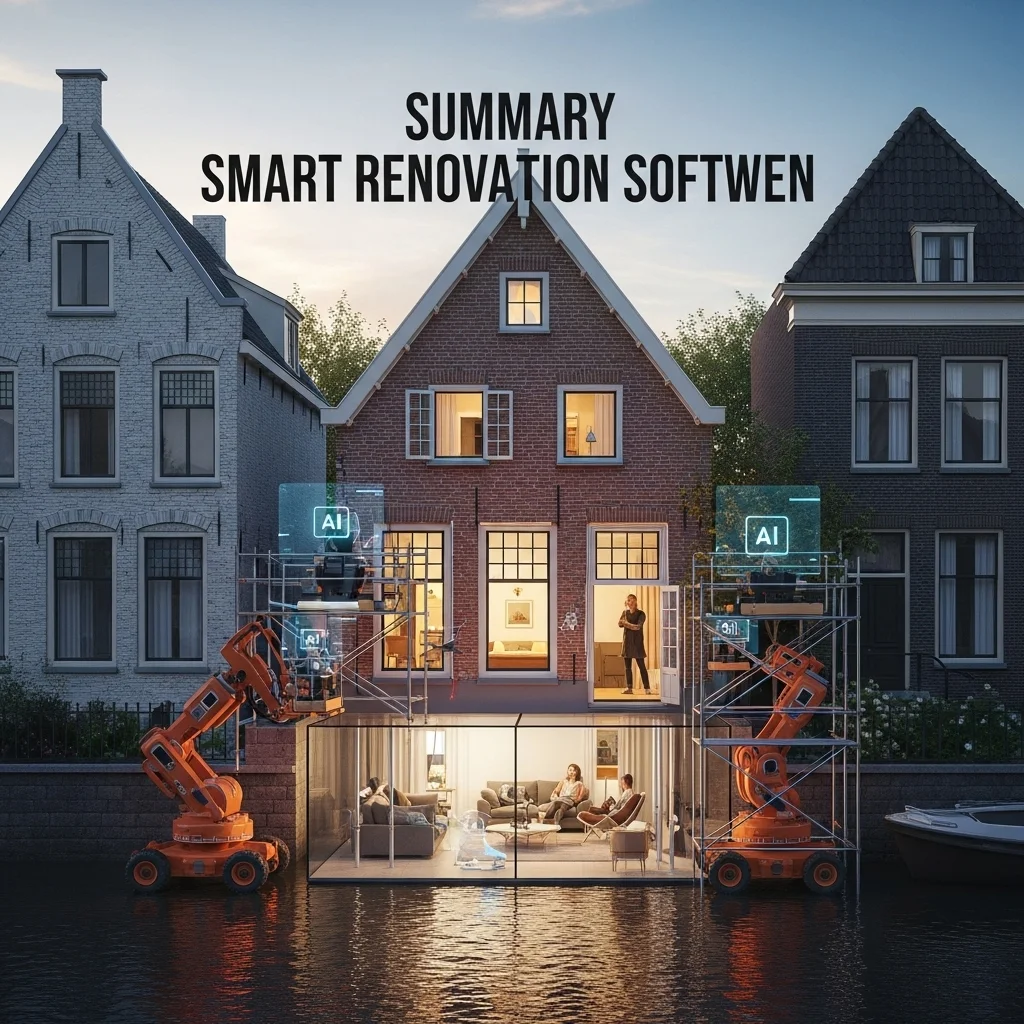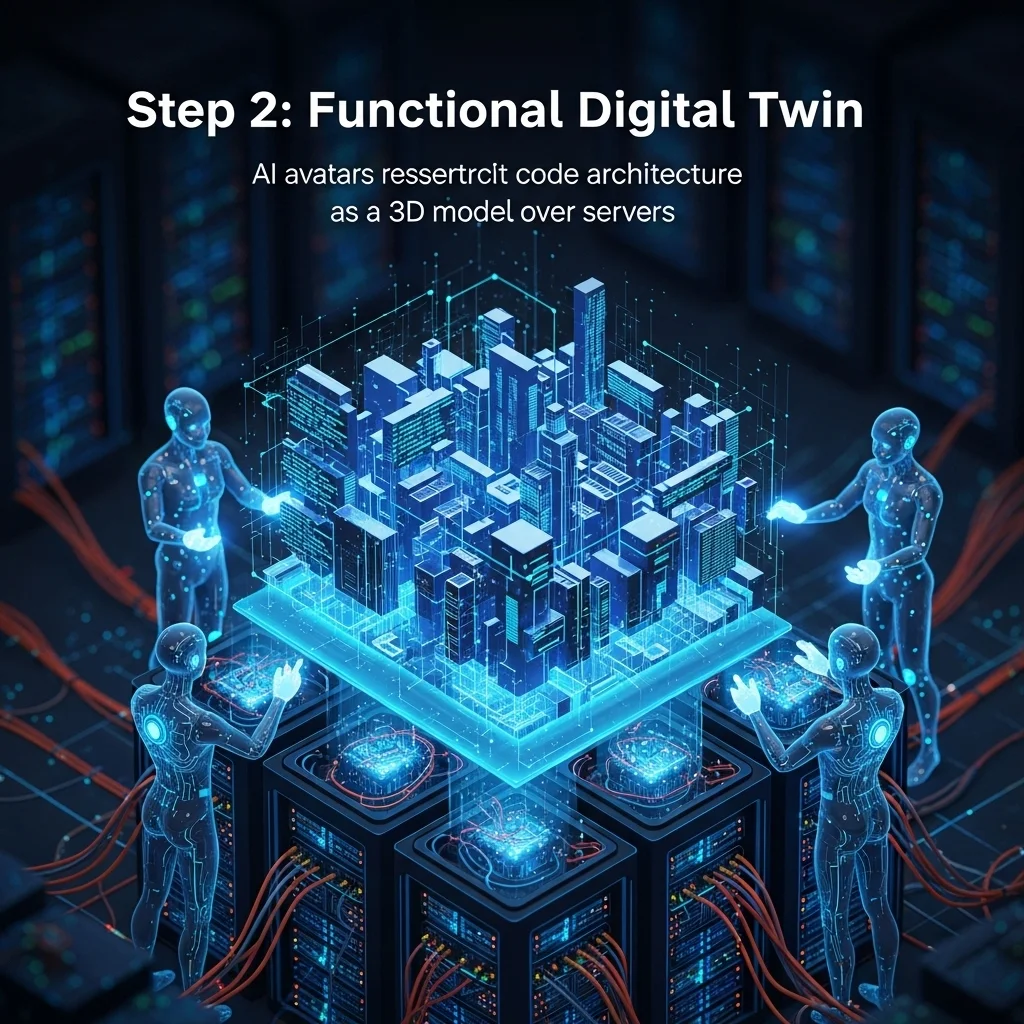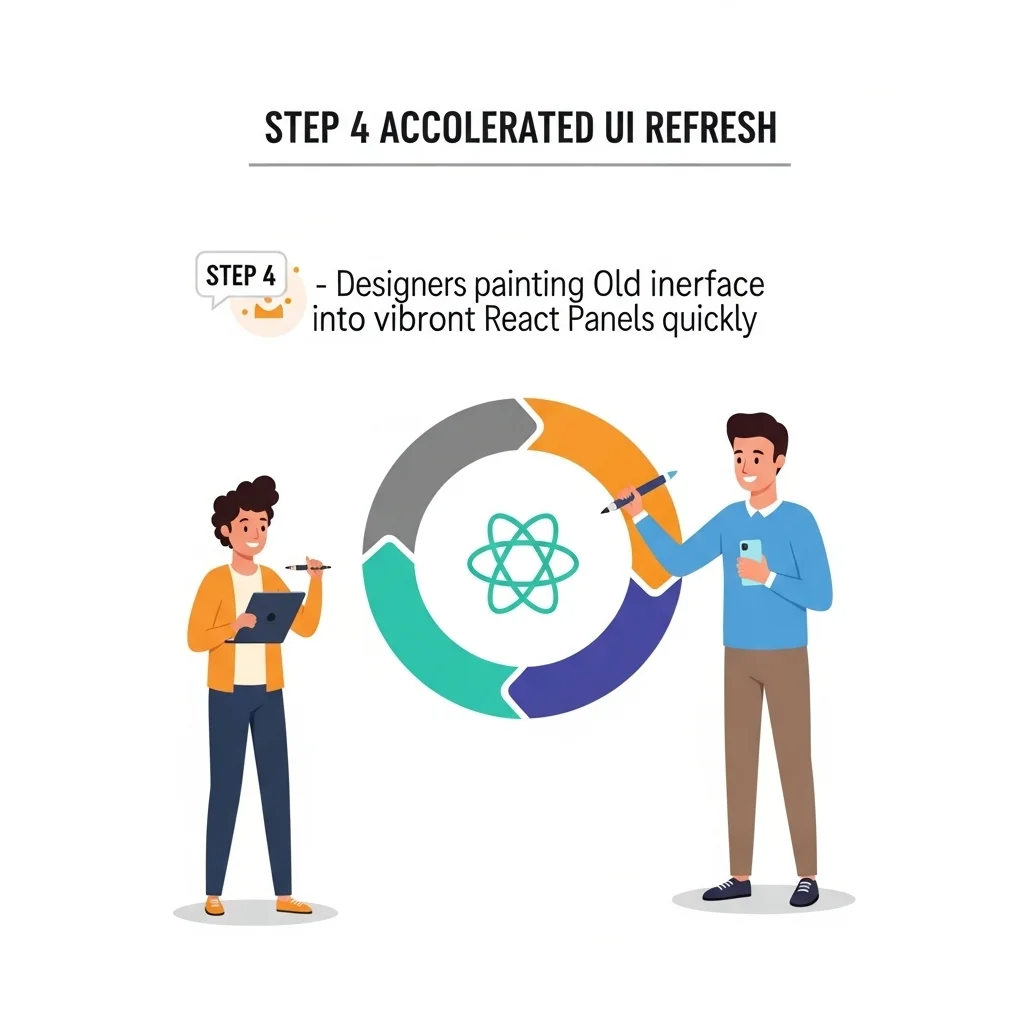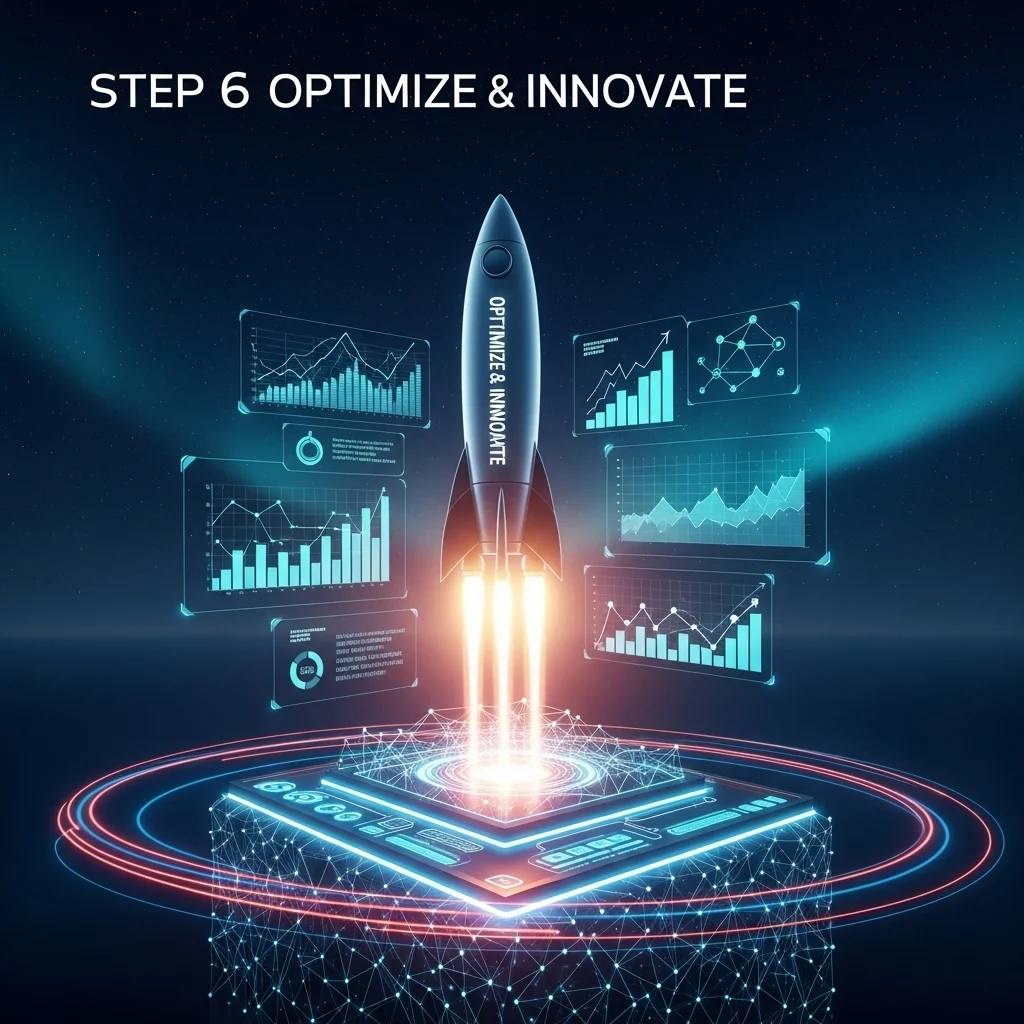Why wait?
Every month of delay costs speed, customers and euros.
Automate
We leverage generative AI to speed up 80–90% of repetitive coding. Fewer human errors, more focus on unique logic.
Integrate
We connect new microservices safely to your existing core, keeping operations running while we modernise — stress-free for your team.
Scale
Ready for growth? Our cloud-native architecture doubles capacity at the press of a button. No more hardware pains, just happier end-users.
Validate
We prove the business case up-front with hard numbers: performance metrics, TCO calculations, ROI scenarios. You know exactly what you’re getting into.
Why smart renovation works.
Why smart renovation works

Picture your software as a characteristic canal house. Charming, yet the wiring dates back to 1978 and the crawl space is damp. Do you demolish it? Or do you renovate cleverly, floor by floor, while the occupants keep sleeping?
Continuity first
Spartner builds a digital twin alongside your current production environment.
Users only switch over once every vital feature has been validated one-to-one.
AI as a turbo-charger
Our internal models analyse legacy codebases and generate clean, tested modules.
Notably, teams report 30–40% fewer regression bugs as a result.
Business case over gut feeling
Together we calculate savings on licences, hardware and support.
What’s more, we simulate new revenue streams as soon as the API layer opens up.
Key benefits at a glance:
faster release cycles (weeks, not quarters)
measurably less downtime
easy integration with BI, IoT and mobile apps
lower operational costs through cloud elasticity
future-proof architecture with microservices and event streaming
How do you navigate this modernisation journey?.
A step-by-step approach that delivers impact without disruption.

Step 1: System snapshot.
We begin with a read-only copy of production. Tests run in parallel, users notice nothing and we instantly see the real bottlenecks — no assumptions.

Step 2: Functional digital twin.
AI agents reverse-engineer processes and convert them into a Universal Application Model. This lets developers understand the “intent” behind the code, not just the syntax.

Step 3: Modular rebuild.
Domain by domain we create microservices: auth, orders, reporting. Each service gets its own tests, CI pipeline and versioning scheme.
Sub-step: Shadow traffic — live traffic flows to both old and new, so we can compare in real time.

Step 4: Accelerated UI refresh.
We derive the design system from the current front-end, refresh it in React or Flutter and auto-generate wherever possible.

Step 5: Phased cut-over.
When metrics (latency, error ratio, throughput) outperform the legacy system we flip the feature flags. No big bang, plenty of relief.

Step 6: Optimise and innovate.
After migration we expand: reporting dashboards, machine-learning recommendations, no-code workflow designers — whatever the business needs.


Ready to give your software wings again?
Schedule a coffee call with one of our modernisation architects. We’ll listen to your story, share honest insights and explore whether our AI-driven approach fits. No sales pitch, just a clear plan.
Practical tips for quick wins

Small tweaks, big impact
In practice organisations often stall on a single bottleneck, not the entire system. So tackle that one pain point first.
Reduce chatty databases
Cache read-intensive queries with Redis.
Bundle writes in an event queue to absorb spikes.
Automate tests
Use contract testing (for example Pact) between old and new services. That way you spot breaks before the deploy.
Measure everything
Install a lightweight observability suite: OpenTelemetry, Prometheus, Grafana. Because without numbers, performance is just a gut feeling.
A critical look at pitfalls

Modernisation is not a silver bullet
Not every application lends itself to an AI-driven rebuild. A monolith with thousands of undocumented stored procedures can delay your project by months if you’re not careful.
Overly ambitious scope creep
Don’t hang all your digital dreams on modernisation. Keep releases small and incremental.
Insufficient business alignment
As mentioned earlier: without buy-in from finance and operations, the roadmap will stall — no matter how good the code is.
Forgotten licences
Sometimes you keep paying for old runtime licences for years. Check contracts early to avoid double costs.
Looking ahead — AI as a colleague

From code generator to code caretaker
AI models are already better at refactoring than the average developer on a Monday morning. Within two years, experts expect autonomous code maintenance to handle 50% of all simple bug fixes.
Continuous regeneration
Code ages. AI agents that refactor daily keep your stack fresh — as if a cleaning crew sweeps through every night.
Explainable migrations
New tooling not only generates code, but also migration documentation in plain English. Handy for audits.
Ethics and governance
Let’s be clear: bias in code suggestions is a real risk. Strict review flows and model audits remain essential.
Frequently asked questions
Straightforward answers to the questions we hear most often.
Do I have to shut down my current system during modernisation? 😊
No. Thanks to our shadow migration everything keeps running. Users will only notice faster load times once we go live.
Does AI really work for every programming language? 🤔
AI agents perform best on popular languages (C#, Java, PHP, JavaScript). For exotic languages we combine AI with manual refactoring.
What about security in microservices? 🔐
We follow zero-trust principles, token-based auth and encrypted service-to-service communication. We also run automated pen tests.
Can I keep parts of my monolith? 🏗️
Yes. We decouple step by step. Certain stable modules can remain for the time being as long as they meet performance and security requirements.
How quickly will I see ROI? 💶
On average within 12–18 months thanks to lower maintenance costs and higher productivity — but we calculate the exact figures in your business case.
What happens to my data during migration? 🛠️
We run migration scripts in parallel, execute checksums and have end-users confirm test scenarios. No data loss, complete peace of mind.
Will my team become redundant? 😅
Certainly not. AI handles the boring work; your developers focus on innovation and customer-specific logic.
Does this approach suit regulated industries? 📜
Absolutely. Our tooling produces complete audit trails and we operate in line with ISO 27001 and GDPR guidelines.










.webp)
